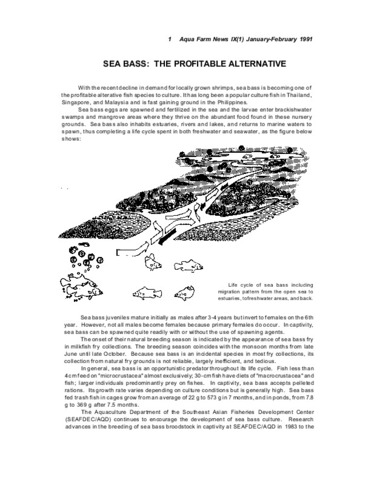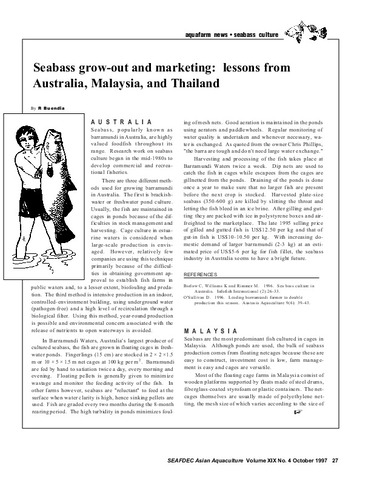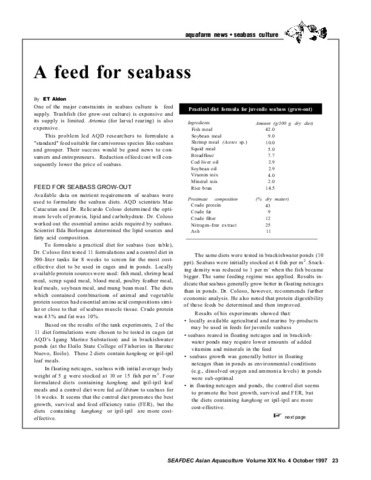Releasing hormones as an effective agent in the induction of spawning in captivity of sea bass (Lates calcarifer)
- Global styles
- MLA
- Vancouver
- Elsevier - Harvard
- APA
- Help

閲覧/開く
日付
1987Page views
2,370ASFA keyword
AGROVOC keyword
Taxonomic term
Metadata
アイテムの詳細レコードを表示する
Share
抄録
A study was conducted to evaluate the effectiveness of luteinising-hormone releasing hormones in the induction of spawning of Lates calcarifer using different administration techniques: pellet implantation, Chinese analogue and osmotic pump implantation.
Suggested Citation
Nacario, J. F. (1987). Releasing hormones as an effective agent in the induction of spawning in captivity of sea bass (Lates calcarifer). In J. Copland & D. Grey (Eds.), Management of Wild and Cultured Sea Bass/Barramundi (Lates calcarifer): proceedings of an International Workshop held at Darwin, N.T., Australia, 24-30 September 1986 (pp. 126–128). Canberra, Australia: Australian Centre for International Agricultural Research.
Type
Conference paperCollections
- Conference Proceedings [299]
Related items
Showing items related by title, author, creator and subject.
-
Sea bass: The profitable alternative
Southeast Asian Fisheries Development Center, Aquaculture Department (Aquaculture Department, Southeast Asian Fisheries Development Center, 1991) -
Seabass grow-out and marketing: lessons from Australia, Malaysia, and Thailand
Buendia, Romeo (Aquaculture Department, Southeast Asian Fisheries Development Center, 1997) -
A feed for seabass
Aldon, E. T. (Aquaculture Department, Southeast Asian Fisheries Development Center, 1997)One of the major constraints in seabass (Lates calcarifer) culture is feed supply. Details are given of work conducted at AQD regarding the formulation of a 'standard' feed suitable for carnivorous species like the seabass ...





